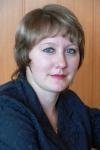References
- Derbush M. V. The use of interactive computer models in the study of the derivative of a function. In: Aktual'nye problemy metodiki obucheniya informatike i matematike v sovremennoj shkole: materialy Mezhdunarodnoj nauchno-prakticheskoj internet-konferencii, Moscow, April 24 – May 12, 2020 / ed. L. L. Bosovoy, D. I. Pavlova. Moscow, 2020. P. 295–300.
- Kapustin Yu. I. Pedagogicheskie i organizacionnye usloviya effektivnogo sochetaniya ochnogo obucheniya i primeneniya tekhnologij distancionnogo obrazovaniya : avtoref. dis. … dokt. ped. nauk. Moscow, 2007. 40 p.
- Lyubomirskaya N. V., Rudik E. L., Khochenkova T. E. Blended learning as a mechanism for the formation of skills in the design and research activities of students. In: Issledovatel'. 2019. № 3 (27). P. 165–180.
- Luchenkova E. B., Noskov M. V., Shershneva V. A. Blended learning mathematics: practice outstripped theory. In: Vestnik Krasnoyarskogo gosudarstvennogo pedagogicheskogo universitete im. V. P. Astaf'eva. 2015. № 1 (31). P. 54–59. (In Russ.)
- Medvedeva M. S. Formirovanie gotovnosti budushchih uchitelej k rabote v usloviyah smeshannogo obucheniya : avtoref. dis. ... kand. ped. nauk. Nizhny Novgorod, 2015. 31 p.
- Mironov A. V. Activity approach in education. Educational, game, design, research activities: methods of implementation, continuity at the stages of general education in the conditions of FGT and FGOS: a guide for teachers. Naberezhnye Chelny, 2013. 139 p.
- Problems of transition to distance learning in the Russian Federation through the eyes of teachers / D. I. Saprykina, A. A. Volokhovich; National Research University Higher School of Economics, Institute of Education. Moscow, 2020. 32 p. (Fakty obrazovaniya № 4 (29)).
- Skarbich S. N. Formation of research competencies of students in the process of learning to solve planimetric problems : textbook. Omsk, 2010. 194 p.
- Nugumanova L. N., Yakovenko T. V., Skobeltsyna E. G. «Boiling point» : blended learning ‒ technology of the XXI century. Kazan, 2019. 72 p.
- Dautova O. B., Ignatyeva E. Yu., Shilova O. N. Mass format of blended learning as a movement towards digital transformation of education [Electronic resource]. In: Nepreryvnoe obrazovanie: XXI vek [Lifelong education: the XXI century], 2020. № 3 (31). Electron. dan. DOI: 10.15393/j5.art.2020.6045. (date of acсess: 25.08.2021). (In Russ.)
- Derbush M. V., Skarbich S. N. Innovative approaches to the use of information technologies in the process of teaching mathematics [Electronic resource]. In: Nepreryvnoe obrazovanie: XXI vek [Lifelong education: the XXI century]. 2020. № 2 (30). Electron. dan. DOI: 10.15393/j5.art.2020.5689 (date of acсess: 25.08.2021). (In Russ.)
- Purnima V. Blended Learning Models [Electronic resource]. S. l., 2002. Electron. dan. URL: https://purnima-valiathan.com/wp-content/uploads/2015/09/Blended-Learning-Models-2002-ASTD.pdf (date of acсess: 24.03.2021).
- Staker H., Horn M. Classifying K-12 Blended Learning [Electronic resource]. [San Mateo, CA], 2012. 22 p. Electron. dan. URL: https://eric. ed.gov/?id=ED535180 (date of acсess: 25.08.2021).
1. Derbush M. V. The use of interactive computer models in the study of the derivative of a function. In: Aktual'nye problemy metodiki obucheniya informatike i matematike v sovremennoj shkole: materialy Mezhdunarodnoj nauchno-prakticheskoj internet-konferencii, Moscow, April 24 – May 12, 2020 / ed. L. L. Bosovoy, D. I. Pavlova. Moscow, 2020. P. 295–300.
2. Kapustin Yu. I. Pedagogicheskie i organizacionnye usloviya effektivnogo sochetaniya ochnogo obucheniya i primeneniya tekhnologij distancionnogo obrazovaniya : avtoref. dis. … dokt. ped. nauk. Moscow, 2007. 40 p.
3. Lyubomirskaya N. V., Rudik E. L., Khochenkova T. E. Blended learning as a mechanism for the formation of skills in the design and research activities of students. In: Issledovatel'. 2019. № 3 (27). P. 165–180.
4. Luchenkova E. B., Noskov M. V., Shershneva V. A. Blended learning mathematics: practice outstripped theory. In: Vestnik Krasnoyarskogo gosudarstvennogo pedagogicheskogo universitete im. V. P. Astaf'eva. 2015. № 1 (31). P. 54–59. (In Russ.)
5. Medvedeva M. S. Formirovanie gotovnosti budushchih uchitelej k rabote v usloviyah smeshannogo obucheniya : avtoref. dis. ... kand. ped. nauk. Nizhny Novgorod, 2015. 31 p.
6. Mironov A. V. Activity approach in education. Educational, game, design, research activities: methods of implementation, continuity at the stages of general education in the conditions of FGT and FGOS: a guide for teachers. Naberezhnye Chelny, 2013. 139 p.
7. Problems of transition to distance learning in the Russian Federation through the eyes of teachers / D. I. Saprykina, A. A. Volokhovich; National Research University Higher School of Economics, Institute of Education. Moscow, 2020. 32 p. (Fakty obrazovaniya № 4 (29)).
8. Skarbich S. N. Formation of research competencies of students in the process of learning to solve planimetric problems : textbook. Omsk, 2010. 194 p.
9. Nugumanova L. N., Yakovenko T. V., Skobeltsyna E. G. «Boiling point» : blended learning ‒ technology of the XXI century. Kazan, 2019. 72 p.
10. Dautova O. B., Ignatyeva E. Yu., Shilova O. N. Mass format of blended learning as a movement towards digital transformation of education [Electronic resource]. In: Nepreryvnoe obrazovanie: XXI vek [Lifelong education: the XXI century], 2020. № 3 (31). Electron. dan. DOI: 10.15393/j5.art.2020.6045. (date of acсess: 25.08.2021). (In Russ.)
11. Derbush M. V., Skarbich S. N. Innovative approaches to the use of information technologies in the process of teaching mathematics [Electronic resource]. In: Nepreryvnoe obrazovanie: XXI vek [Lifelong education: the XXI century]. 2020. № 2 (30). Electron. dan. DOI: 10.15393/j5.art.2020.5689 (date of acсess: 25.08.2021). (In Russ.)
12. Purnima V. Blended Learning Models [Electronic resource]. S. l., 2002. Electron. dan. URL: https://purnima-valiathan.com/wp-content/uploads/2015/09/Blended-Learning-Models-2002-ASTD.pdf (date of acсess: 24.03.2021).
13. Staker H., Horn M. Classifying K-12 Blended Learning [Electronic resource]. [San Mateo, CA], 2012. 22 p. Electron. dan. URL: https://eric. ed.gov/?id=ED535180 (date of acсess: 25.08.2021).













